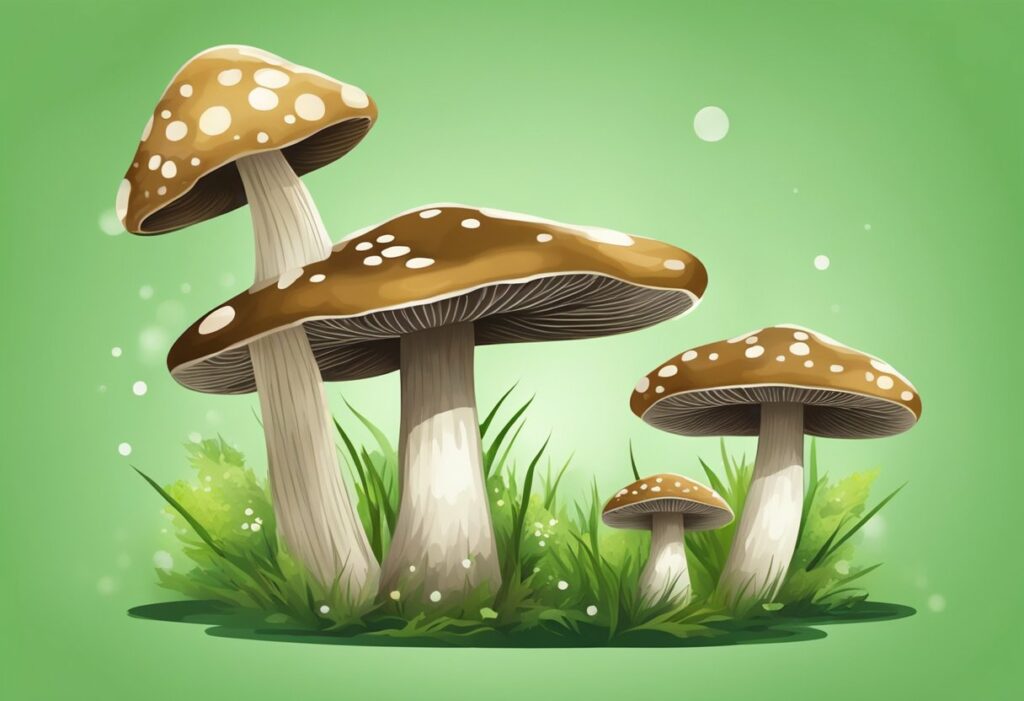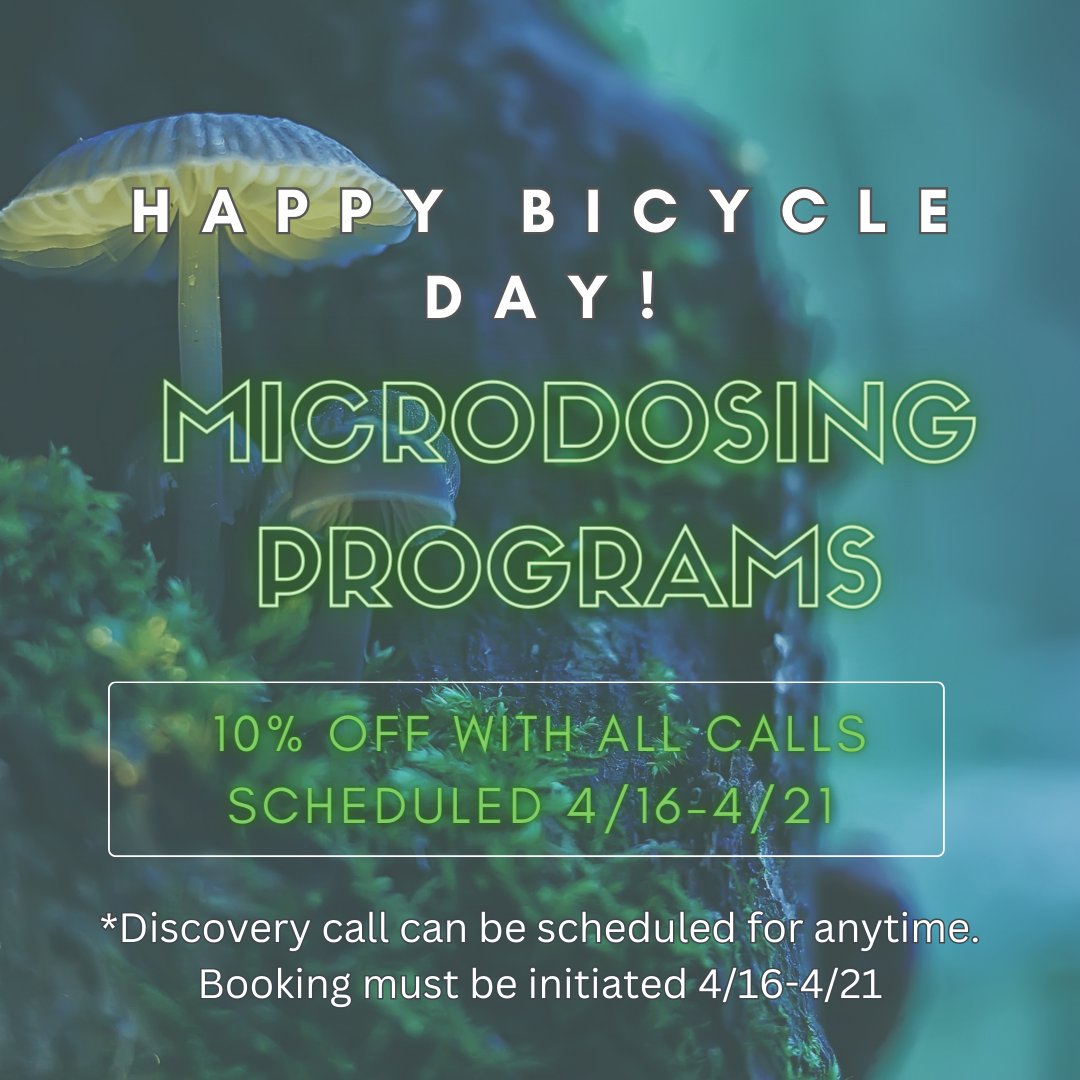Magic mushrooms, or “shrooms,” contain the psychoactive compound psilocybin, which induces profound changes in perception and consciousness. People often use them for both recreational and medicinal purposes, seeking a heightened sense of awareness and connection with their surroundings. However, understanding how often one can safely consume shrooms is crucial to avoid negative side effects and potential health risks.
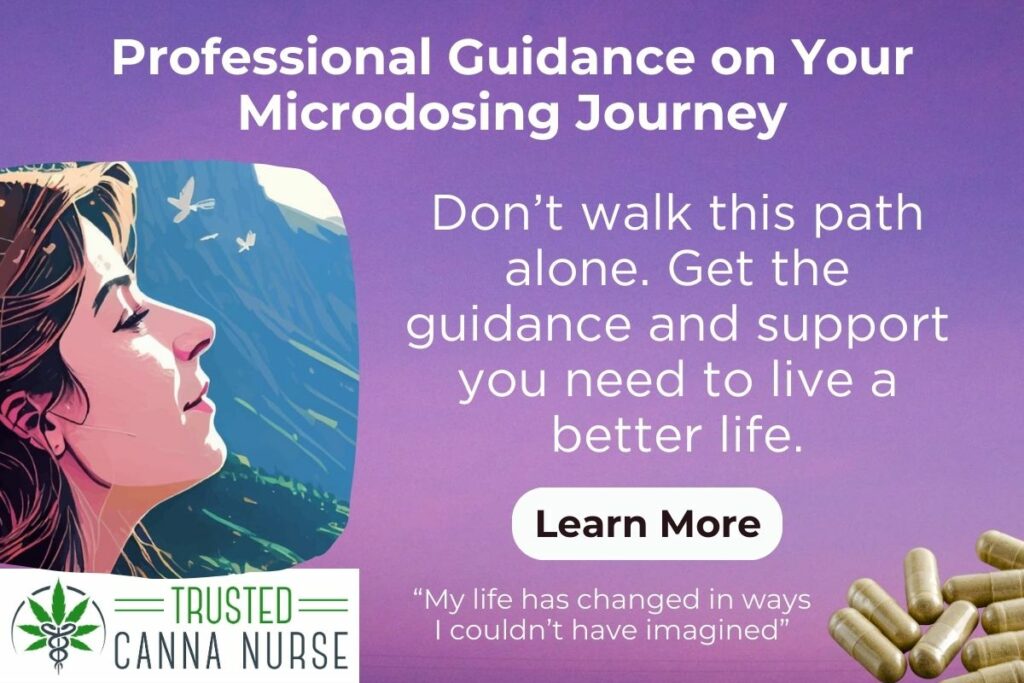
While individual experiences may vary, it’s generally advisable to space out shroom trips to allow both the body and the mind sufficient time to recover and reset. Tolerance to psilocybin can build up quickly, necessitating higher doses for the desired effects and increasing the risk of negative experiences, such as “bad trips.” To promote safe and responsible use, understanding the psychedelic effects, appropriate dosages, and waiting times between shroom trips is essential.
We recommend working with trained professionals to guide you on both microdosing and full trips.
Key Takeaways
- Spacing out shroom trips can help prevent negative side effects and health risks.
- Tolerance to psilocybin may increase with frequent use, requiring higher doses for the same effects.
- Responsible use involves understanding psychedelic effects, appropriate dosages, and waiting times between trips.
- Work with a professional
Understanding Shrooms
Shrooms, also known as magic mushrooms, contain the psychoactive compound psilocybin. Psilocybin mushrooms are a group of fungi that have been used traditionally for spiritual and recreational purposes. These magical fungi have gained popularity due to their potential therapeutic effects in treating various mental health conditions such as depression, anxiety, and PTSD.
While there is no fixed rule on how often one can take shrooms, it is essential to understand their effects and potential risks before deciding to consume them regularly. The intensity and duration of a shroom trip can vary depending on factors such as the species of psilocybin mushrooms, individual tolerance levels, and the amount ingested. Generally, a single trip can last anywhere from 4 to 6 hours.

When taking shrooms, it’s crucial to start low and go slow, especially if it’s your first experience. Too much consumption of psilocybin can lead to a challenging experience, known as a “bad trip,” which may result in anxiety, paranoia, and negative thought loops. Taking adequate breaks between shroom trips allows the body and mind to recover, process the experience, and reduces the risk of developing a tolerance, which can decrease the shrooms’ effects over time.
For individuals considering microdosing, the practice involves taking small, sub-perceptual doses of psilocybin mushrooms to enhance creativity, productivity, and overall well-being, without experiencing the psychedelic effects associated with higher doses. A typical microdosing schedule can involve consuming psilocybin once every three days to avoid building a tolerance, but everyone will have a different regimen. Work with trained professionals to help find yours.
While the optimal frequency to take shrooms varies from person to person, it is essential to treat these psychoactive species with the respect and caution they deserve. Understanding their potential benefits and risks, being mindful of dosages, and allowing adequate time between trips can lead to a safe and beneficial experience with magic mushrooms.
Psychedelic Effects
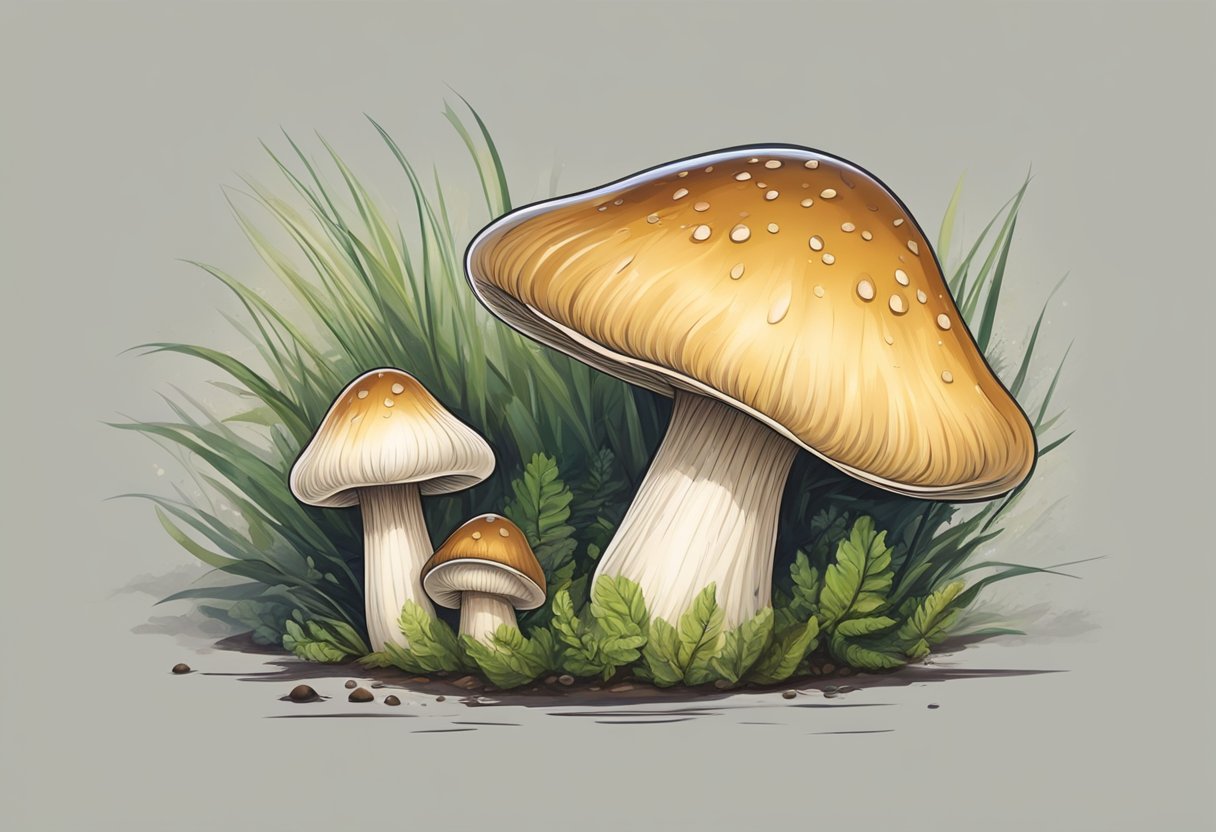
Psychedelic effects are a complex series of psychological changes that can occur when an individual consumes certain substances, such as psilocybin mushrooms or LSD. These effects can vary greatly depending on the person’s mindset, the specific substance consumed, and other factors.
One common aspect of a psychedelic experience is the alteration of perception, which can include visual hallucinations, time dilation, and synesthesia (the blending of sensory experiences). The individual may also feel a sense of euphoria or a heightened emotional state during the trip. It is worth noting that these effects can be both positive and negative, depending on the person’s mindset and their environment during the trip.
Another important aspect of psychedelic experiences is the potential for psychological insights or profound realizations about the self and the world. These moments can lead to personal growth and a deeper understanding of the individual’s own thoughts and feelings. However, it is crucial to approach these insights with a balanced and skeptical mindset, as the psychedelic state can sometimes produce delusions or false conclusions.
The frequency of taking psychedelic substances like shrooms depends on various factors such as the individual’s tolerance, sensitivity to the drug, and their purpose for using the substance. While some individuals might use shrooms for therapeutic or spiritual purposes and take them only occasionally, others might use them recreationally, which could lead to more frequent use. It is essential to be mindful of the potential risks and benefits of taking psychedelics and to establish healthy patterns of use.

Psychedelic drugs, including shrooms, work by interacting with serotonin receptors in the brain. These substances can mimic serotonin, a neurotransmitter responsible for regulating mood, appetite, and sleep, among other things. Hence, it is not surprising that consuming these drugs can lead to altered perceptions and emotional states.
It is also worth mentioning the possible occurrence of flashbacks following psychedelic experiences. These are brief episodes where the individual re-experiences some aspects of their trip, without consuming the drug again. Flashbacks are usually harmless but can be distressing for the person experiencing them.
In conclusion, the psychedelic effects of substances like shrooms can be a powerful and transformative experience for some individuals. Careful consideration must be given to factors such as mindset, environment, and the frequency of use to minimize risks and ensure responsible consumption.
Dosage Information
Psilocybin mushrooms, commonly known as “shrooms,” can induce heightened emotional experiences, heightened introspection, and altered psychological functioning when consumed. The appropriate dosage depends on various factors such as the individual’s body weight, metabolism, and sensitivity to the substance. It is crucial to provide accurate information on safe doses to minimize risks and avoid negative experiences.
A typical moderate dose of psilocybin mushrooms ranges between 1 to 2.5 grams of dried mushroom material. This dosage level generally offers a balance of introspective and emotional experiences without overwhelming the user. A lower dose, in the range of 0.5 to 1 gram, can serve as a starting point for inexperienced users or those who are more sensitive to the substance. This lower dose may induce milder effects and is often referred to as a “microdose.”
On the other hand, dosages exceeding 3 to 5 grams are considered high and can lead to intense experiences, including strong hallucinations, emotional fluctuations, and potentially challenging psychological effects. Such doses should be reserved for individuals with considerable experience with psilocybin mushrooms and should be taken with utmost caution and respect for the substance. Please note that these dosage suggestions only serve as guidelines, and each individual’s response to psilocybin may differ significantly.
When considering the frequency of consumption, it is essential to remember that repeated and frequent use of psilocybin mushrooms may result in a buildup of tolerance. This means that taking shrooms consistently over a short period of time may lead to diminishing effects, necessitating higher and potentially unsafe doses to achieve similar results. As tolerance to psilocybin develops quickly, it’s recommended to wait at least 1 to 3 weeks between sessions to maintain potency and reduce the risk of adverse effects or experiences. Additionally, some users report lessened anxiety when limiting their shroom use to no more than once a month, as mentioned in a qualitative study on self-treatment of migraine and cluster headaches.
In conclusion, understanding proper dosages and respecting the frequency guidelines are crucial when consuming psilocybin mushrooms. This knowledge ensures a safer and more balanced experience, helping individuals navigate the world of shrooms responsibly.
Tolerance and Waiting Time
When it comes to using psilocybin mushrooms, commonly known as “shrooms,” it’s essential to understand tolerance and waiting time between doses. Tolerance refers to the body’s reduced response to a substance due to repeated use. With psilocybin, tolerance typically develops quickly, causing users to need increasingly larger amounts to achieve the same effects.
Waiting time between doses is particularly important as it allows the body to return to its baseline, reducing the chances of developing tolerance or experiencing adverse side effects. Most users report that it takes about 5-7 days for their tolerance to return to normal after a single dose of shrooms. Therefore, waiting at least a week between doses is usually a safe guideline to follow.
However, some individuals may have different tolerance levels, and it’s crucial to listen to your body and adjust accordingly. Factors like body weight, metabolism, and previous experiences with psychedelics can impact tolerance levels, making it difficult to determine exact waiting times.
It’s also worth noting that taking higher doses of shrooms can result in a longer waiting time due to the increased impact on the body’s neurotransmitter systems. Some users find that after heavy doses, it may take 10-14 days for their tolerance to fully reset.
In conclusion, considering factors such as individual tolerance and waiting time is crucial for safely and responsibly using psilocybin mushrooms.
Magic Shroom and Mental Health
Magic mushrooms, containing the active ingredient psilocybin, have been increasingly researched for their potential therapeutic benefits in treating mental health conditions such as depression and anxiety. Psilocybin has shown promise in clinical studies as a possible intervention for these disorders.
A recent study examined the potential of demographic variables, mental health conditions, and use patterns of magic mushrooms. The study found that the rate of emergency medical treatment sought for adverse experiences following magic mushroom use was approximately five times lower when compared to LSD-related incidents. This suggests that magic mushrooms may pose a lower risk of harm when compared to other substances.
Another review on the harm potential of magic mushroom use suggested that adverse effects could be minimized by avoiding its use for people who are currently taking pharmaceutical drugs or suffering from mental illness. It is also important for users to avoid operating machines or driving while under the influence of magic mushrooms.
In a study on the clinical potential of psilocybin, the substance was found to have long-lasting positive effects on mental health. Participants reported improved well-being and life satisfaction up to 8 to 16 months post psilocybin administration, and exhibited no long-term negative side effects.
A population study on psychedelics and mental health found no evidence of increased risk for long-term mental health problems following the use of magic mushrooms, LSD, or mescaline. On the contrary, the study suggested that psychedelic use might be associated with a lower risk of mental health issues.
In conclusion, magic mushrooms and their active ingredient, psilocybin, show potential as a treatment for mental health conditions like depression and anxiety. Although further research is required to establish its safety and efficacy, current findings indicate that its risks may be comparatively lower than other substances, with a possible positive impact on the mental well-being of users in the long run.
Microdosing and Its Effects
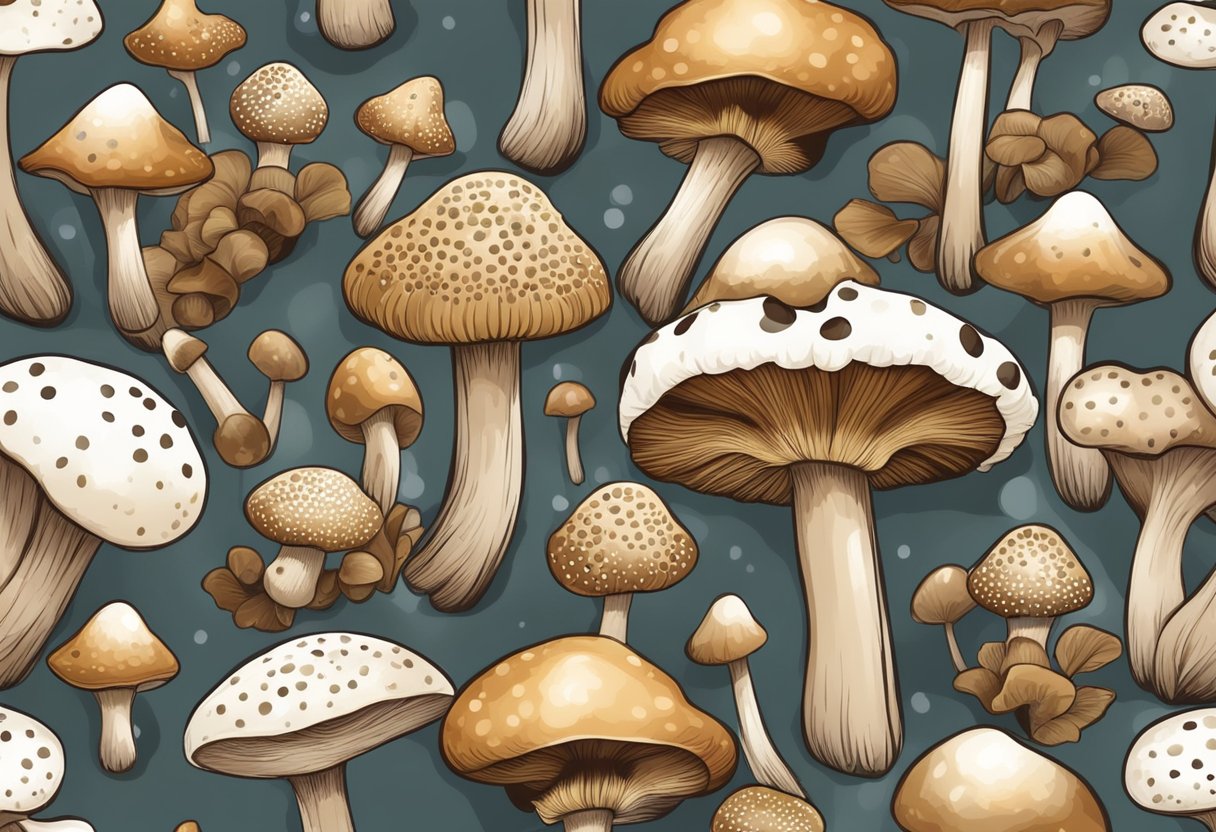
Microdosing is a practice involving the consumption of small amounts of psychedelics, such as psilocybin mushrooms, to enhance cognitive function, creativity, and overall well-being without experiencing the intense hallucinogenic effects typically associated with these substances. In this context, psilocybin is gradually converted to psilocin in the body, which is the active compound responsible for the psychological effects of these fungi.
Researchers have been exploring the potential benefits and drawbacks of microdosing. Some users report improvements in mood, focus, and overall productivity when microdosing psilocybin mushrooms. However, the potential risk of tolerance buildup and the need for more scientific evidence on long-term effects are essential factors to consider.
The optimal microdosing regimen varies among individuals, with some choosing to follow a specific schedule, such as dosing every third day, while others opt for a more flexible approach based on their personal needs and preferences. The dosage for microdosing typically ranges from 0.1g to 0.5g of dried psilocybin mushrooms, depending on the individual and the desired effect.
It is crucial to approach psychedelic microdosing with caution and proper harm reduction practices, such as performing or avoiding certain activities on microdosing days, to ensure the best results and minimize potential risks. As with any substance, individual reactions may vary, so starting with a low dose and gradually increasing according to personal response is advised.
Despite the growing interest and anecdotal benefits, more controlled studies are needed to confirm the potential advantages and address safety concerns associated with microdosing psychedelics such as psilocybin mushrooms.
Safety Measures and Bad Trips
When using psilocybin mushrooms, it’s essential to take necessary safety precautions to minimize the likelihood of a bad trip. A bad trip can be defined as a challenging or negative experience while under the influence of psychedelic substances, such as psilocybin mushrooms. Factors that contribute to bad trips may include dosage, environment, mindset, and individual differences.
Dosage: It’s crucial to start with a low dose, especially for first-time users or individuals who may be more susceptible to negative experiences. Gradually increasing the dosage in subsequent sessions can help avoid overwhelming or unpleasant effects. Make sure to wait at least one to three weeks between sessions to allow for a psychological and physical reset.
Environment: The setting in which one consumes psilocybin mushrooms plays a significant role in the overall experience. It’s advisable to use the substance in a comfortable, familiar, and safe environment, preferably with trusted friends or a trip sitter. Avoiding noisy, crowded, or chaotic locations can help reduce the chances of encountering negative stimuli that may trigger a bad trip.
Mindset: An individual’s mental state before ingesting psilocybin also significantly influences the experience. It’s important to approach the experience in a positive, relaxed, and open-minded state. Avoid using psychedelics during times of emotional turmoil or mental distress, as this may amplify negative emotions and increase the likelihood of a bad trip.
Individual differences: As with any substance, some individuals may be more prone to having challenging experiences with psilocybin mushrooms. Those with a history of mental health issues or a predisposition to anxiety and neuroticism may be at higher risk for bad trips. In such cases, extra care should be taken to address these factors and consider whether the use of psychedelics is suitable.
If a bad trip does occur, it’s essential to remember that the experience is temporary and will eventually subside. Surrounding oneself with supportive friends, focusing on positive thoughts, changing the environment or stimuli, and seeking professional help if necessary can help mitigate the severity and duration of a bad trip.
PRISM recommends following these safety measures and being aware of the factors influencing one’s experience with psilocybin mushrooms. This will increase the likelihood of a positive, insightful, and rewarding experience.
Growing and Hunting Shrooms
Growing and hunting psilocybe cubensis, a popular species of magic mushrooms, requires knowledge and adherence to specific conditions. To cultivate these mushrooms at home, one must provide a suitable environment for their growth, maintain proper sanitation procedures, and ensure that the spores used are of good quality.
When creating an ideal environment for psilocybe cubensis, a combination of rice flour and vermiculite typically serves as a substrate, utilizing a high humidity level and a steady temperature around 75-80°F (24-27°C). Air exchange and indirect sunlight are also essential factors in promoting growth. Proper sanitation is crucial during the cultivation process to prevent contamination, and using spores from reputable sources ensures the development of desired results.
In the world of mushroom hunting, safety, and identification skills are of utmost importance. Psilocybe cubensis is predominantly found in subtropical areas, often growing in cow and horse manure or rich, fertilized soil. It is essential to educate oneself about the specific characteristics and habitat of psilocybe cubensis to avoid mistaking it for a potentially dangerous species. When hunting for these fungi, be mindful of local regulations and obtain necessary permits if required.
More details about mushroom hunting regions are available in the Complete Mushroom Hunter: An Illustrated Guide to Foraging, Harvesting, and Enjoying Wild Mushrooms, which can serve as a comprehensive reference source.
When considering how often one can consume shrooms safely, it’s important to remember that every person’s body reacts differently to psychedelic experiences. Factors such as tolerance, body weight, and sensitivity to psilocybin can impact individual experiences, and it’s advisable to allow an adequate break between sessions. A general rule is to wait at least 1-2 weeks before consuming mushrooms again, ensuring responsible and safe usage.
Frequently Asked Questions
What is a safe frequency for magic mushroom consumption?
There is no definitive answer to the safe frequency of magic mushroom consumption, as it depends on several factors, such as individual reaction, dose, and the purpose of use. Some users partake in magic mushrooms occasionally for spiritual or personal growth, while others may use them more frequently for therapeutic reasons. It is essential to listen to your body and mind, and take breaks as needed to avoid potential adverse effects.
What factors affect how often one should take shrooms?
Multiple factors affect how often one should take shrooms, including one’s physical health, mental wellbeing, individual tolerance, and the intended purpose of using the substance. Additionally, differing psilocybin potencies in different mushroom species can also influence how often they should be consumed. It is crucial to assess these factors before deciding on the frequency of use to ensure a safe and responsible experience.
What are the potential risks of using magic mushrooms too frequently?
Using magic mushrooms too frequently can increase the risk of developing a psychological dependence, exacerbating pre-existing mental health conditions, and experiencing adverse reactions such as anxiety, paranoia, and psychosis. Moreover, frequent use may lead to the build-up of tolerance, which can diminish the intended effects of psilocybin and potentially provoke users to consume more significant quantities, increasing the risk of harm.
How long should you wait between magic mushroom experiences?
While there is no standard waiting time between magic mushroom experiences, it is generally recommended to wait at least several weeks or months between sessions to allow the body and mind to recover fully. This waiting period helps to prevent the development of tolerance and ensures a more meaningful and profound experience each time the mushrooms are consumed.
Are there any tolerance issues with regular magic mushroom usage?
Yes, regular magic mushroom usage can lead to the development of tolerance. Tolerance to psilocybin (the active compound in magic mushrooms) builds up relatively quickly with repeated, frequent use. As tolerance increases, users may require higher doses to achieve the desired effects, which can increase the likelihood of experiencing adverse reactions or developing a dependency. To minimize tolerance, it is advisable to wait several weeks or months between magic mushroom experiences.
What can be the impact of frequent use of shrooms on mental health?
Frequent use of magic mushrooms can have both positive and negative impacts on mental health. Some users have reported improvements in mood and reduced anxiety or depression symptoms after using magic mushrooms. However, repeated or excessive use may worsen pre-existing mental health conditions, contribute to the development of new psychological disorders, or lead to negative experiences such as paranoia and hallucinations. To minimize potential harm, it is vital to use shrooms responsibly and consider the potential risks and benefits for one’s mental well-being.
Last Updated on February 11, 2024 by Megan Mbengue, BSN, RN, CHPN

